10 Things to Do Right After You Move In
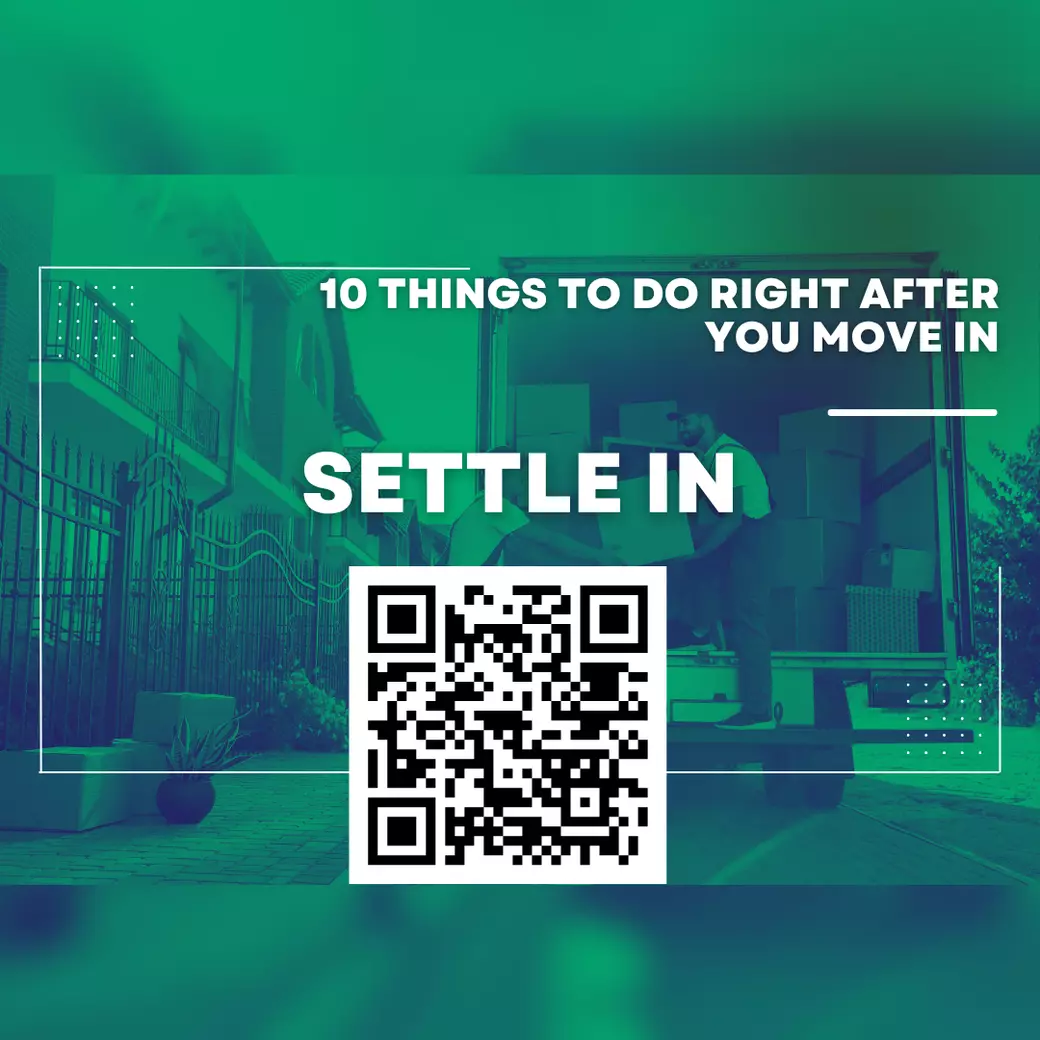
Congratulations on your new home!
The ink is dry on the closing papers and the keys are finally in your hand. Now comes the exciting (and occasionally overwhelming) part – settling in. As a local Fresno real estate professional, I’ve learned what new homeowners wish they knew in those first days after moving. To save you time, stress, and “if only I’d known” moments, I’ve compiled a checklist of the 10 things to do right after you move in. These tips are informative, a little witty, and 100% aimed at making your transition easier. Let’s turn your new house into a home, step by step. (Consider placing an image of a happy family unpacking boxes in their new home next to this introductory section.)
1. Update Your Address Everywhere
One of the first things to tackle is updating your address with all the necessary institutions. Don’t put this off – not only do you want your mail and bills to find you, but California law actually requires notifying the DMV of an address change within 10 days of your move . Here’s where to start:
-
USPS (Mail Forwarding): Fill out the official USPS change-of-address form online or at the post office. This forwards your mail to your new place for 6-12 months. Bonus: that form often comes with a coupon packet – usually including 10% off at Lowe’s, which can be super handy for new homeowners!
-
DMV (Driver’s License & Vehicle): Update your driver’s license and vehicle registration to your new address. The California DMV lets you do this online without an office visit dmv.ca.gov. It’s free and only takes a few minutes. Remember, you’re legally supposed to inform the DMV within 10 days, so hop to it. (The DMV won’t issue a new license automatically for an address change, but you can request one if you want the new address on your ID.)
-
Voter Registration: Moving within Fresno or within California? Your voter registration doesn’t update automatically. You can update your address online through the California voter registration portal so you’re ready for the next election.
-
Banks, Insurance, etc.: Notify your bank, credit card companies, insurance providers (home, auto, health), and any subscriptions of your new address. Many allow you to update info online in your account profile. This ensures bills and important notices don’t get lost. As a perk, updating your address with insurance might be required to maintain coverage – and it keeps your records clean in case of any claims.
Taking an hour to update these will prevent a lot of headaches down the road. As one of my clients said, “I didn’t miss a single Amazon delivery or utility bill after my move, because I updated everything right away!” It’s a small task with big benefits.
2. Set Up Your Utilities (Lights On, Wi-Fi Running)
No one wants that “moved in, but no power or water” situation – especially after a long moving day when you really need a hot shower. As a new homeowner in Fresno, you’ll likely deal with a mix of utility providers:
-
Electricity/Gas (PG&E): In Fresno, Pacific Gas & Electric (PG&E) is the main provider for electricity and gas. Good news: you can start or transfer service online or by phone, often effective the same day pge.com. PG&E even allows scheduling your start date up to 60 days in advance, which is great if you plan ahead. Tip: Have your new address and move-in date handy. You can create a PG&E account online, or if you’re already a customer, just add your new address to your account. If online forms aren’t your thing, a quick call to PG&E’s customer service (1-877-660-6789) will get your service switched over.
-
Water, Sewer & Trash (City of Fresno): These services are typically handled by the City of Fresno for homes within city limits. You’ll want to start water/sewer and garbage service in your name. The City of Fresno has an online “Start Utility Service” form – fill it out and they’ll process your request within about 48 hours. If you need the water on today, call the City’s Utilities department at 559-621-6888 to expedite – they can often start service the same day if you call before closing. Have your address and move-in date ready when you call. You’ll be set up with an account for monthly billing. (Pro tip: while you’re at it, ask about setting up online bill pay or paperless billing to make life easier.)
-
Internet/Cable: Fresno has several internet and cable providers (Comcast Xfinity, AT&T, satellite options, etc.). Schedule your internet installation ASAP – many providers are busy, so you might be waiting a week or two for an appointment if you don’t call early. If you work from home or have avid streamers/gamers in the family, you know how crucial that Wi-Fi is! Try to arrange installation for as soon as you have occupancy. Nothing is worse than sitting among unpacked boxes with no Netflix or Spotify to keep you motivated.
-
Other Utilities: If your home uses propane or a well (more common in rural outskirts than in the city proper), make sure to schedule those services too. And don’t forget to update your address for any delivered services like home security monitoring or bottled water delivery.
By setting up all your utilities during the first day or two, you won’t have to live in the dark, take cold showers, or burn through your cellphone’s data plan. Flip those switches and enjoy the modern comforts from day one!
3. Learn Your Trash & Recycling Schedule
Trash day has a way of sneaking up on you in a new neighborhood. You don’t want to be the only house on the block with overflowing bins because you guessed wrong on pickup day. In the City of Fresno, residential trash, recyclables, and green waste are all collected on the same day of the week for your address. Which day depends on where you live – for example, one area might be Monday, another area Tuesday, and so on.
Here’s how to find your schedule:
-
Check the Fresno City Utilities Website: The city’s Public Utilities department has a Residential Services page with info on collection schedules. Often, new residents receive a flyer or welcome letter with their specific pickup day. If not, you can call Fresno’s 311 information line (dial 3-1-1 within city limits) or 559-621-CITY to ask. They’ll tell you your trash day based on your address.
-
Look at Your Neighbors’ Routine: A simple trick – see when neighbors put out their bins. If every house on the street has green, blue, and gray carts at the curb Thursday morning, that’s a big hint that Thursday is your pickup day too. (Just make sure they’re not out there for a special pickup or holiday delay.)
-
Set a Reminder: Once you know your day, set a weekly phone reminder or mark it on your calendar. In Fresno, carts should be at the curb by 5:30 a.m. on pickup day (yes, that early!). It’s okay to put them out the evening before – after 6 p.m. is allowed. And after the trucks roll by, remember to pull your cans back in by the evening. The city requires bins to be stored away out of view between pickups (nobody likes wandering trash cans blocking the street all week).
-
Holiday Schedules: Fresno’s trash schedule mostly stays the same even on Monday holidays. However, there are exceptions for major holidays like Thanksgiving, Christmas, and New Year’s. The city posts holiday schedule changes on their website, and usually local news or mailers will remind you. When in doubt, check the city site or call 311 for holiday pickup info so you’re not caught with a turkey-carcass-filled bin that doesn’t get picked up when you expected.
Garbage and recycling might not be glamorous, but they are a part of life. Getting this sorted (pun intended) early means one less worry – and a cleaner, fresher home as you start settling in.
4. Change the Locks and Secure Your Home
Here’s a piece of advice seasoned real estate agents always give: change your locks as soon as you move in. It’s not that the previous owners were untrustworthy – it’s that keys have a mysterious way of multiplying. Contractors, cleaning services, neighbors, the in-laws of the former owner… who knows who might still have a copy of that house key?
For peace of mind, swap out or rekey the exterior locks on day one. As HouseLogic wisely puts it, “You really don’t know who else has keys to your home”. Changing the locks ensures you and your family are the only ones with access. The process is pretty quick and inexpensive, too. You can buy new deadbolt lock sets at any hardware store (many decent ones are $10–$30) and install them yourself with a screwdriver in a matter of minutes. If DIY isn’t your thing, a locksmith can rekey or replace locks for you – typically around $20–$30 per lock for the labor if you provide the hardware.
Don’t forget other access codes and keys:
-
Garage Door Opener: Reset the garage door code (especially if the previous owners shared it with neighbors or relatives). Most garage openers have a simple reset button on the unit – then you can program a new code on the keypad. If you have remotes, reprogram those too.
-
Alarm System: If the house has a security system, change the alarm codes/passwords and notify the alarm company of the change in ownership. You don’t want the old code floating out there. If you’re new to using a security system, take time to learn how it works (nothing more annoying than accidentally setting off your own alarm at 2 a.m. and frantically trying to remember the code!).
-
Spare Keys: Figure out where you want to keep your spare key (and who gets one). It’s wise to give a trusted local friend or nearby family member a spare in case you ever lock yourself out. But that hidden key under the doormat? Consider a less obvious spot – or a lockbox. We’ve all seen the fake-rock trick; burglars have too.
Locking down your home’s security right after moving in will help you sleep better – literally. It’s a simple step that establishes peace of mind from day one in your new place.
5. Test Safety Devices (Smoke Alarms, CO Detectors & More)
One of the first things I do in a new home (before I even finish unpacking the bedroom) is check all the safety devices. It’s not the flashiest task, but it can be a lifesaver. Take a quick tour through your house and ensure the following are in working order:
-
Smoke Detectors: Press the test button on each smoke alarm to make sure it beeps loudly. If any don’t respond or sound weak, replace their batteries and test again. Not sure when they were last replaced? It’s worth putting in fresh batteries in all alarms now so you have a known baseline. Also, check for expiry – yes, smoke detectors do expire (typically after 10 years). The manufacture date is usually on the back; if it’s over 10 years old, plan to swap it for a new unit. Fresno fire codes require working smoke alarms in each bedroom and hallway, so ensure your home is compliant for your family’s safety.
-
Carbon Monoxide (CO) Detectors: California law requires CO detectors in homes, usually one per floor and outside sleeping areas. Test these the same way (there’s a button like with smoke alarms). If your home doesn’t have CO detectors, install them now. CO is an odorless gas from things like gas heaters or stoves – you definitely want that early warning if levels ever build up. CO detectors are inexpensive and easy to plug in or mount.
-
Fire Extinguishers: Locate any fire extinguishers that came with the house (often under the kitchen sink or in the garage). Check the pressure gauge – the needle should be in the green zone, indicating it’s charged. If it’s not, or if you can’t find any extinguishers, put it on your shopping list. Every home should have at least one extinguisher, rated for multi-purpose (ABC type), in an easily accessible spot. Hopefully you’ll never need it, but if a small kitchen fire sparks, you’ll be glad it’s there.
-
Electrical Panel & Gas Shutoff: While not a “device,” knowing these locations is super important for safety. Find your electrical breaker panel (often in a garage, utility room, or outside). Open it up and see if the circuits are labeled (if not, you might do a quick test and label them soon). In an emergency where you need to cut power, or if you blow a fuse, you’ll know what to do. Similarly, locate the main water shutoff valve (in case of a plumbing leak) and the gas shutoff for your home. The gas shutoff is usually a valve on your gas meter (outside the house). In the event of a major earthquake or if you smell a gas leak, you’ll want to turn that off. Keep a wrench handy near the gas meter for this purpose. Knowing how to turn off utilities is crucial knowledge for any homeowner.
-
Security System & Cameras: If your new home has an alarm or cameras, make sure they’re working properly. Change any default codes (as noted earlier), and run a test – for alarms, you can usually call the monitoring company and put it in test mode to avoid dispatching the cavalry while you verify each sensor.
It may seem like a lot, but you can go through this safety checklist in under an hour. That hour is well spent for the peace of mind knowing your smoke alarms are ready to alert you, your fire extinguisher is at hand, and you could shut off utilities in a pinch. It’s all about being proactive – a hallmark of happy, prepared homeowners.
6. Make Sure Your Address Is Easy to See (For Emergencies & Pizza Deliveries!)
Now that you’ve secured the inside of the house, take a quick step outside and evaluate your house number visibility. This might sound trivial, but it’s actually very important. In an emergency, seconds count – you want police, fire or medical responders to find your home without delay. Also, let’s be honest, you want the pizza guy to find you too!
Stand on the street and ask: Can I clearly spot my house number? If the answer is “umm, not really,” then take action:
-
Big, Clear Numbers: Fresno city code (and common sense) says your address numbers should be clearly visible from the street. Ideally use numbers at least 4 inches tall, with a color that contrasts against your house’s paint. For example, black numbers on a white house, or white numbers on a brick wall. And pro tip: reflective or illuminated numbers are fantastic for nighttime. If your porch light doesn’t shine on your address, consider getting stick-on reflective numbers or even solar-powered LED address signs. First responders arriving at night will thank you. As one fire department advises, house numbers should be large, reflective, and posted where they’re easy to see at night from both directions on the road.
-
Mailbox and Curb: If you have a mailbox at the street, make sure the numbers on it are clean and visible. Put numbers on both sides of the mailbox if it’s out by the road – emergency vehicles might come from either direction. Some neighborhoods also have house numbers painted on the curb. These can fade over time, so if yours is a faint memory of a number, repaint it or use number stencils. (There are services that paint curb numbers, often as a small fundraiser by local groups – keep an eye out for those.)
-
Trim Obstacles: Is there a lovely bush or tree inadvertently hiding your address? Trim back any vegetation or move that hanging plant. You don’t want your house number obscured by foliage. Keep it unobstructed from view.
-
Rear or Alley Access: Less common, but if your property is one where emergency services might come via an alley or back entrance, ensure the number is posted there as well. Some older Fresno neighborhoods have alley garages – posting your address there too can help direct emergency crews correctly.
This might all sound like overkill, but being able to directly guide 911 to your door with visible numbers is a small thing that can have life-saving implications. Plus, it helps new friends and delivery folks find you more easily. It’s a quick weekend DIY that sets you up for safety. Grab those shiny new address numbers and display them with pride – you’re officially on the map!
7. Prepare for Central Valley Blackouts & Weather Surprises
Welcome to the Central Valley, where the summers are scorching, the winters sometimes bring surprise fog or frost, and power outages can happen when you least expect (looking at you, PG&E). Part of settling into your new home is making sure you’re ready for those occasional curveballs Mother Nature (or the electric company) throws our way.
Power Outage Prep: Fresno’s summers are known for heat waves, and while the electrical grid is more stable than in the past, we do see outages occasionally – whether from heat-related failures or planned PG&E safety shutoffs. Don’t be scared; just be prepared:
-
Lights and Batteries: Keep flashlights or battery-powered lanterns in an easy-to-find spot (and test them now to ensure the batteries are good). When the lights suddenly go out, you don’t want to be stumbling through dark rooms searching for that one flashlight. Pro tip: avoid using candles during outages if you can – as cozy as they are, they pose a fire risk. (PG&E itself urges customers to use battery-operated flashlights instead of candles in outages.) Save the romantic candlelight for non-emergencies!
-
Charge Up: Make a habit of keeping your essential electronics charged, especially when you know extreme weather is coming. It’s wise to have an external battery pack (power bank) charged as well, so you can recharge phones to stay connected during an extended outage. If you have medical devices that need power, consider investing in a backup battery or generator, and register for your utility’s Medical Baseline program for outage alerts.
-
Fridge and Food: A full fridge will stay cold about 4 hours during a power loss (freezers about 48 hours, if unopened). To help, you can freeze containers of water now – they turn into ice blocks that can keep your food cold longer if the power goes out. Plus, you’ll have cold water to drink. Try to minimize opening the fridge/freezer during an outage. And it’s not a bad idea to keep a few non-perishable snacks and bottled water around for impromptu picnic meals when you can’t use your stove.
-
Stay Cool or Warm: In summer, know where your nearest cooling center or air-conditioned public place is (like a mall or library) in case of a multi-hour outage during a heat wave. In winter, have some warm blankets handy and a safe way to stay warm. Never use ovens or charcoal grills for indoor heat – those can create CO dangers. If you have a fireplace, make sure it’s clean before use and have some dry wood stocked up.
-
Outage Alerts: Sign up for PG&E’s outage alerts or download their app. It will text/email you if a Public Safety Power Shutoff (planned outage due to wildfire risk) or other major outage is coming. Knowledge is power (literally, in this case).
Weather Events: Aside from heat, the Fresno area can get the occasional storm or other quirk:
-
Tule Fog: In winter, we get a dense ground fog some mornings (locals call it Tule fog). It can be dangerously thick for driving. If you’re new to it, know that it’s okay to delay your morning commute until it clears up. Always use low beams (not high beams) in fog and drive slowly. Not exactly a home preparedness thing, but a crucial safety tip for living here!
-
Rain and Wind: We don’t get tons of rain, but when we do, check your roof and gutters early on. Make sure gutters are clear of leaves so water can drain properly. Secure any patio furniture or decor if a big windstorm is forecast – we occasionally get gusty conditions that can send things flying.
-
Earthquakes: While Fresno isn’t on a major fault line like SF or LA, we can occasionally feel quakes from afar. A moderate shaking might rattle your dishes once in a blue moon. It’s wise to have furniture like bookcases secured to the wall (earthquake straps) and know the “Drop, Cover, Hold On” drill. We’ll talk more about quake prep in the next section with emergency kits, but one immediate task: locate your main gas shutoff valve (as mentioned in the safety section above). After a significant quake, you’d turn off gas if you suspect a leak. Keep an adjustable wrench near the valve for this reason.
By preparing for outages and local weather, you’ll turn what could be ordeals into mere inconveniences. Picture yourself calmly reading a book by flashlight with a chilled beverage from your cooler of ice, while your neighbors are panicking in the dark – that’s you, the prepared homeowner. (Okay, let’s hope the whole neighborhood prepares, but you get the idea!)
8. Assemble an Emergency “Go Bag” and Plan for Evacuations
Now we’re going into Boy/Girl Scout mode: Be Prepared. If 2020 taught us anything, it’s to expect the unexpected. Every homeowner should have an emergency kit, often called a “go bag,” in case you need to evacuate quickly or survive at home without power/water for a few days. Since we live in California, the big ones to think about are wildfires (in case of an evacuation order) and earthquakes (in case infrastructure is temporarily disrupted). Let’s make sure you’re ready for anything – it’s easier than you think.
Build Your Emergency Kit: This is a bag (or box) with essential supplies for each family member for at least 3 days (72 hours). Pack it and store it in an easily accessible place (front hall closet, garage shelf near the door, etc). Crucial items to include:
-
Water and Food: Aim for 1 gallon of water per person per day (so 3 gallons each for 3 days) and non-perishable foods. Think canned goods, energy bars, dried fruit, peanut butter – stuff that doesn’t need cooking. Don’t forget a manual can opener if you pack cans! And include some pet food if you have furry family members.
-
Medications and First Aid: Have a basic first aid kit (bandages, antiseptic, pain relievers, etc.) and at least a 3-day supply of any prescription meds for each person. If you rely on things like inhalers or insulin, pack spares if possible. Also include basic hygiene items (toothbrush, toothpaste, soap, hand sanitizer, feminine products – whatever you’d need).
-
Clothes and Gear: Pack a change of clothes for everyone (think practical and season-appropriate). Sturdy shoes are a must – if you ever evacuate at 2 a.m., you don’t want to do it in flip flops or fuzzy slippers. Include a jacket or blanket for warmth. Throw in a flashlight with extra batteries and a battery-powered radio. A whistle can be useful for signaling. And some cash in small bills – ATMs and card readers might be down in a disaster.
-
Important Documents: Imagine needing to rebuild your life with only what’s in your go bag – what papers would you want? At the very least, have copies of your driver’s licenses, ID cards, insurance policies, home deed or lease, and a list of important account numbers or contacts. Keep a printed list of emergency contact phone numbers (family, doctors, insurance, etc.) in case your phone dies. It’s smart to keep documents in a waterproof pouch or ziplock. You can also scan and save documents to a USB flash drive in the kit for a compact backup.
-
Evacuation Map & Contacts: In a wildfire scenario, know your evacuation routes. It’s good to have a paper map of the area with at least two different routes marked to get out of your neighborhood (in case one is blocked). Also decide on a meeting point or place to stay if family members get separated or if you can’t return home – e.g., a relative’s house in another part of town or a friend in the next city. Discuss this plan with your family now, when everyone’s calm.
-
Special Items: If you have kids, pack some comfort items (a small toy, stuffed animal, or game) to keep them occupied and feeling secure. For babies, remember formula, diapers, wipes. For pets, have leashes, carriers, and some pet food and bowls. If anyone has glasses or contacts, toss in an old spare pair and lens solution.
It sounds like a lot, but you likely have most of these items at home already – it’s just a matter of gathering them. CAL FIRE’s Ready for Wildfire guide suggests a similar checklist: 3 days of supplies, medications, important papers, clothes, toiletries, cash, and those all-important evacuation route maps. You can customize your go bag to your family’s needs. The goal is that if you hear a knock on the door saying “you have 5 minutes to leave,” you can grab that bag and go, knowing you have what you need to get through the next few days safely.
Know Your Evacuation Plan: Different emergencies call for different actions:
-
Wildfire Evacuation: These can happen in the wider Fresno County (especially in foothill areas around the valley). If authorities issue an evacuation order for your neighborhood, do not hesitate – grab your go bag and loved ones and get out. Know in advance where you’d go. Identify a friend’s or relative’s home you could head to, or a hotel, or as a last resort an evacuation center (the Red Cross often sets these up at schools or fairgrounds – they’ll announce locations via news and social media). As you drive out, tune in to local radio (AM 580 or FM emergency channels) for instructions. And remember that plan for two routes: if fire or traffic blocks one highway, know an alternate way out.
-
Earthquake: You can’t evacuate from an earthquake since they strike without warning. Instead, your plan is what to do during and after. During a quake: Drop, Cover, and Hold On under a sturdy piece of furniture. After the shaking stops, check for injuries and damage. If your home is structurally sound, you likely stay put. If it’s damaged or there’s a gas leak (hence knowing how to shut off gas), you might temporarily move out until it’s safe. It’s good to have a contact person out-of-town you can check in with (sometimes local phone lines are jammed, but you can get a message out of the region). Also, know where your community’s emergency shelters are (usually announced by city officials if needed). The go bag will be handy if you have to camp in the backyard or at a shelter for a bit.
-
Other Scenarios: Fresno isn’t prone to hurricanes or massive floods, but we could see localized flooding in a freak storm, or even a hazmat spill or other incident that might cause an evacuation. The preparation is largely the same. Keep an ear on official warnings (a NOAA Weather Radio is a great tool for this) and heed any orders. Always have at least a quarter tank of gas in your car (half a tank is even better) so you’re not scrambling to fuel up if you need to leave town in a hurry.
While nobody likes to imagine worst-case scenarios, taking these preparedness steps will make you feel empowered. One of my past clients told me that assembling her family’s emergency kit actually helped her kids feel less scared about wildfires – it turned it into a proactive project and they loved picking canned foods and toys for the bag. In a strange way, prepping for disasters can bring peace of mind (and maybe even a little family bonding).
(Consider placing an image of a backpack filled with emergency supplies – a “go bag” – next to this section, to visually illustrate the emergency kit concept.)
9. Deep Clean and Change the Filters
You’ve taken care of safety, security, and official paperwork – now let’s talk about making your new home truly clean and comfy. Even if the previous owners tidied up on move-out, it’s a great idea to do a deep clean before you settle completely in. After all, this is your home now, and you deserve a fresh start (literally). Plus, you don’t really know how diligently the last folks scrubbed that bathroom or how long those carpets have been collecting… things.
Here’s a cleaning game plan from a pro-agent (who’s seen some messes in her day):
-
Carpets and Floors: If you have carpets, consider getting them professionally cleaned or renting a carpet cleaner. You’d be amazed (and possibly a bit grossed out) at what comes out of “clean-looking” carpet. (According to one expert, carpets can harbor a jungle of bacteria and allergens – reportedly 4,000 times dirtier than a toilet seat on average. Yikes!). A deep steam cleaning will make carpets look, smell, and feel new. For hardwood or tile, mop and disinfect to remove any grime. Don’t forget the corners and baseboards.
-
Kitchen and Bathrooms: These are priority areas. Wipe down inside cabinets and drawers (who knows, there could be crumbs or old contact paper you want to replace). Disinfect countertops, sinks, and especially the bathtub/shower – nothing like knowing it’s your soap scum in there now, not someone else’s. Clean the toilet thoroughly (new seat, anyone?). Run an empty load in the dishwasher with a cleaning agent, and do the same for the washing machine (many washers have a self-clean cycle or use a cup of white vinegar and hot water). Also, check the fridge – even if it looks clean, wiping the shelves with a food-safe cleaner can’t hurt.
-
Replace Air Filters: The HVAC (heating/air conditioning) filter is often forgotten in the hustle of moving. Locate your return vent or furnace filter slot and put in a fresh filter. Fresno’s air quality can be dusty, especially in summer, so a new filter helps your HVAC run efficiently and keeps your indoor air cleaner. Mark the date; most filters need changing every 2-3 months. While you’re at it, also check vent covers for dust buildup and give them a vacuum or wipe.
-
Pest Control: New house, new pests? Hopefully not, but it’s common to see a spider or ant or two when a home has been vacant during the sale process. If you notice signs of any unwelcome critters (droppings, chew marks, etc.), consider bringing in a pest control service to do an initial treatment. Even if there’s no evidence of pests, some new homeowners proactively do a general pest spray (especially in California, where ants and roaches are sneaky). It’s easier to handle before you have all your stuff put away. And nothing ruins the first-night-in-our-home vibe like a cockroach cameo on the kitchen floor.
-
Air it Out: Finally, open the windows (if weather permits) and let that Fresno breeze flow through. A home can smell a bit musty after being closed up. Airing it out, maybe burning a nicely scented candle or diffuser, and enjoying the fresh start smell is the cherry on top of your cleaning cake.
Investing a day in deep cleaning will make you feel so much better about everything that comes next. You’ll literally breathe easier. Some people even throw a “cleaning party” before the furniture is all arranged – invite a couple friends, promise pizza and drinks, and knock out the scrub-down together. Whether solo or with help, once you do this, you can relax knowing your new home isn’t just new to you, it’s also sanitized to your standards.
10. Get to Know Your Neighbors and Neighborhood
Last but certainly not least: put on your friendly face and meet the neighbors! This step is fun and rewarding – and it truly helps turn a new house into a home. Building a good relationship with your neighbors can lead to lifelong friendships, safer communities, and that warm feeling that you belong in your new area.
Here are a few ways to break the ice and settle into the neighborhood:
-
Introduce Yourself: Seems obvious, but in today’s busy world, sometimes weeks go by without more than a wave. Next time you see a neighbor outside, walk over and say hello. A simple “Hi, I just moved in at 123 Maple Street and wanted to introduce myself” goes a long way. People are usually happy to meet the newcomer. If you feel up to it, you might even knock on the doors of the immediate houses next to or across from you just to say a quick hi. (Bringing cookies isn’t necessary, but nobody ever complained about a friendly treat either!)
-
Neighborhood Intel: Neighbors can be great sources of local tips. They might clue you in on which day is street-sweeping day (so you don’t get a parking ticket), or recommend a great local handyman, or tell you when the next block party or neighborhood yard sale is happening. Ask them about garbage pickup quirks, or if the community has a group chat, email list, or Nextdoor forum. In Fresno, many neighborhoods use the Nextdoor app – it’s worth joining for your area to stay in the loop on community news and events.
-
Explore Local Spots: Take a stroll or drive around your new area. Find the closest grocery store, gas station, and park. Locate the nearest hospital or urgent care (good to know, just in case). If you’re in Fresno proper, maybe you’re near hotspots like Woodward Park, River Park shopping center, or Fresno’s vibrant downtown. Check out the local restaurants (nothing says “welcome” like discovering your new favorite taco spot or coffee shop). Becoming a regular at a neighborhood café can help you meet more locals.
-
Community Involvement: Consider joining any local community groups or associations. Is there a HOA? Or a neighborhood watch? Perhaps a Facebook group for your tract or development? Jump in – it’s a great way to get insider info and contribute. Also, say hi to your mail carrier – they often know the neighborhood well and appreciate a friendly greeting.
-
Be a Good Neighbor: As you settle in, remember the little things that make a good neighbor: keep your yard tidy, follow any parking rules, and mind noise levels especially at night. If you have a housewarming party, maybe give close neighbors a heads-up (or even invite them if it feels right). Goodwill goes both ways – by showing consideration, you set the stage for friendly relations.
I’ve had clients become best friends with their neighbors – swapping gardening tips, watching each other’s pets during vacations, even starting weekly barbecues. Whether or not you become BFFs, knowing the folks around you adds security and happiness to homeownership. They can pick up your packages when you’re away, lend you a cup of sugar (or a power drill), and generally make the neighborhood feel like a community.
So don’t be shy – get out there on your front porch or attend that next-door block party. Soon enough, you’ll be the “established” neighbor welcoming the next newbie on the block!
By following these 10 steps, you’ll be light years ahead in the new-homeowner game. More importantly, you’ll transform that unfamiliar new house into your space, feeling safe, organized, and connected. From the boring paperwork (necessary, but not exactly fun – we know) to the crucial safety checks and the enjoyable task of meeting new people, we’ve covered the bases to set you up for success.
Moving is a whirlwind, but remember to take a moment to soak it all in. This is the start of a new chapter in your life! Arrange your furniture, put up those family photos, maybe paint an accent wall that really says “you.” And as you do all this, don’t hesitate to lean on resources around you – including us here at All Elite Homes.
All Elite Homes isn’t just here to hand you keys and wave goodbye. We’re your partners in this journey of homeownership. If you have questions or need recommendations (from the best local plumber to the yummiest local donut shop), we’re just a phone call or message away. Feel free to reach out to our team at any time – we love helping our clients even after the sale, whether it’s with real estate advice or community tips.
Thinking about upgrades or curious what your home’s value is now that you’ve moved in? Check out our resources and guides on our website, or contact us for a friendly chat. And if you have friends or family looking to buy or sell in the Fresno area, we’d be honored if you send them our way – we’ll take good care of them (that’s a promise).
Once you’re settled and if you ever get the itch to move again (it happens!), you can browse our latest listings anytime or just give us a holler. And in case you want to learn more about who we are and why we’re so passionate about helping homeowners, take a peek at our About Us page.
Welcome to your new home in Fresno! We at All Elite Homes are thrilled for you and wish you many happy years ahead. Now, go enjoy that well-earned rest – you’ve got the address changed, the utilities running, the emergency kit prepped, and neighbors to barbeque with. Your home adventure has just begun, and it’s going to be great. Congratulations once again, and remember, we’re here whenever you need a hand or have a question. Happy moving in! 🏡🎉
Categories
Recent Posts
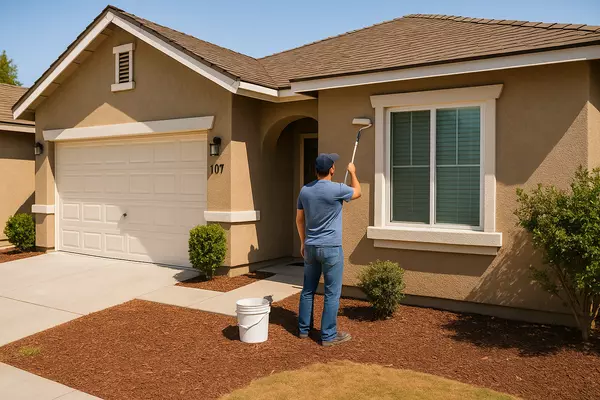


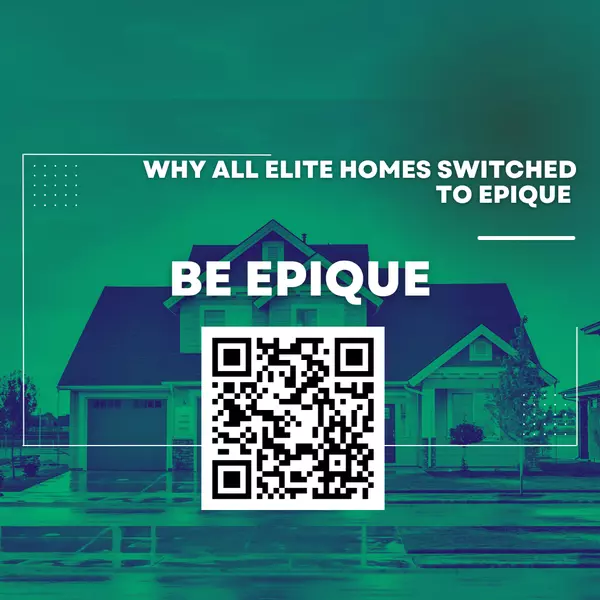

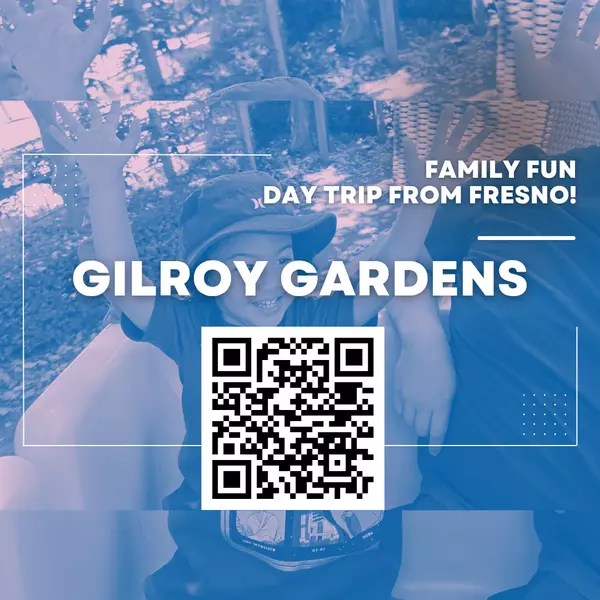


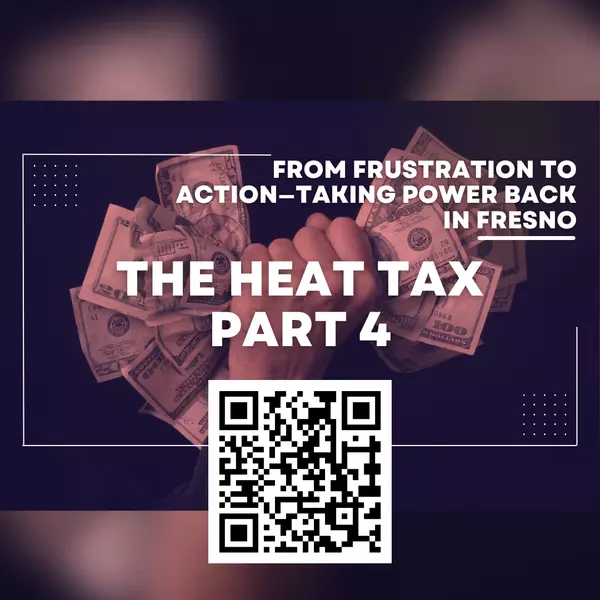

GET MORE INFORMATION


